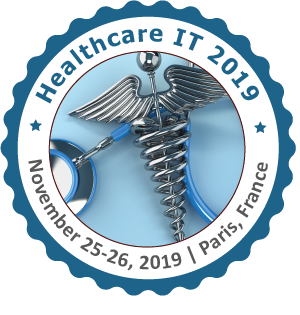
Kagalwala F
The Lister Hospital-East and North Hertfordshire NHS Trust, UK
Title: Quality improvement project on optimizing hydroxycarbamide prescriptions in paediatric sickle cell disease
Biography
Biography: Kagalwala F
Abstract
Hydroxycarbamide is a cytotoxic agent that blocks the ribonucleotide reductase system resulting in inhibition of DNA synthesis. By stimulating fetal haemoglobin (HbF) synthesis, hydroxycarbamide leads to reduction of HbS concentration which in turn reduces HbS polymerization. Hydroxycarbamide is recommended for prevention of vaso-occlusive disease. Its use in children with sickle cell anaemia is on the increase. However, given its narrow therapeutic index and increased patient variability in dose responsiveness, close monitoring and careful dose titration is required, as overdosing can lead to myelosuppression. Conversely, underdosing would lead to missed opportunity to optimize medication efficacy in reducing further sickling. The main focus of our quality improvement project was to introduce a reliable, sustainable method of monitoring blood results to facilitate decision-making by the paediatric consultant with haematology expertise with regards to hydroxycarbamide dose adjustment. Our study includes the following findings: Out of the 33 HbSS patients on our register, 15 were on hydroxycarbamide. Eight out of 15 patients were male (53.3%), 7 (46.7%) were female. Mean age of sickle cell patients on hydroxycarbamide at 1st March 2019 was 10.9 years. Mean age of patients when hydroxycarbamide was commenced was 7.4 years. In terms of formulation of hydroxycarbamide, 10 (67%) patients received capsules while 5 (33%) received liquid formulation. The average duration of each dispensed formulation was 9.7 weeks. The average dose of hydroxycarbamide as of 1st March 2019 was 21 mg/kg/d (median 17 mg/kg/d). As a result of this QI project, there was an observable 75% increase in frequency of testing post-introduction of this new monitoring system from four times to seven times per year.This is suggestive of better compliance to monitoring, allowing better dose optimization. Prior to the new hydroxycarbamide prescribing chart, the frequency of outpatient monitoring had been less, possibly due to more difficulty keeping track of patients, previous test results and dose adjustments. Analysis of emergency department (ED) attendance data had shown a decline in presentation of acute sickle crisis in the last six months. Through peer communication, an increased uptake of this medication was observed in this cohort. Consequently, our district general hospital paediatric department has seen a substantial rise in the number of children on hydroxycarbamide managed within the region. There have been no reported prescription errors since introduction of the new charts. In conclusion, this new prescribing chart had improved patient safety via a well-regulated, double-gated surveillance system (pharmacist-clinician). Improved patient monitoring had maximized the drug efficacy and enhanced quality of life of these children with reduced hospital presentation from painful crisis.

